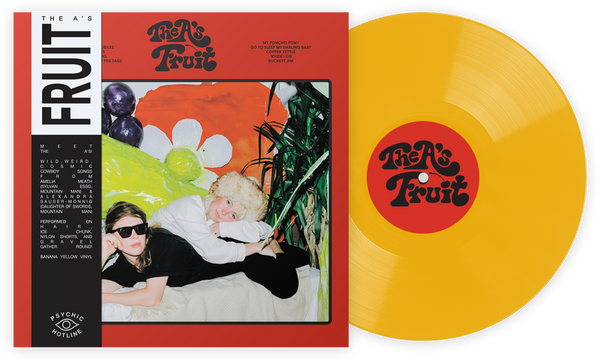有很多关于早期朋克及其对流行音乐影响的书籍,同时也有关于后朋克的书籍,这些书更有趣,因为它们清楚地说明了后朋克作为一种音乐类型的微妙和复杂。许多更有趣的音乐是由那些看到朋克并说了两件事的艺术家们开发(和启发)的:1)我可以做到这一点,2)我可以做到得更好。是否真的更好取决于听众(提示:是的),而且后朋克是一个非常宽泛的术语,涵盖了1978年至1984年间大量不同音乐的创造,这些音乐跳出了朋克的悬崖,实验了声音、风格和影响。它将艺术的大胆与朋克的愤怒结合在一起,但突破了传统摇滚乐的桎梏,汲取并回馈给像克劳特摇滚、艺术摇滚、弹拨流行、嘻哈、民谣、放克等类型。基本上,后朋克统治。
n在氛围厚重的哀歌和狂热的舞蹈欢庆之间,从内心燃烧的歌曲到外向愤怒的歌曲,有许多后朋克的里程碑值得深入研究。以下是十个。

Siouxsie & The Banshees: The Scream
Siouxsie & The Banshees’ debut album, The Scream (1978), is raw fury personified but instead of a fireball careening out of control, the band carefully controls the musical space and the disconcerting imagery. The strangled opening notes of “Pure” are weird and ominous, and Siouxsie Sioux’s distant wails add to the discomfort. Then Steve Severin’s bass notes anchor the mood as the drums (Kenny Morris) and guitar (John McKay) build to a climactic crash with Siouxsie singing about confusion and not feeling like yourself on “Jigsaw Feeling.” The search for self continues with “Overground” which starts off with disjointed guitar riffs and culminates with pounding drums. “Carcass” and “Nicotine Stain” are more straightforward punk but the rest of the album puts punk rock on its ear. Highlights include the nightmarish “Mirage,” the disturbing “Suburban Relapse,” and the claustrophobic “Switch.” And in one of the early covers of “Helter Skelter,” the Banshees take one of the Beatles’ more rocking numbers and show us what true menace sounds like.

Pere Ubu: Dub Housing
Pere Ubu was born in the hurricane of punk in the mid-‘70s from the bleak industrial landscapes of Cleveland, Ohio, but were ignored by the mainstream scene for not sounding like everyone else and for not coming from NY. The band embraced its outsider status like a badge of honor, keeping their so-called ‘avant-garage’ in the underground. On second album Dub Housing (1978), basic rock ‘n roll song structures are twisted into mewling, yelping shapes. “Navvy” and “On the Surface” begin the album on a familiar, if odd, pop-punk beat, but the album steadily deconstructs into noisy art-rock, with frontman David Thomas giving it his screechy best. He’s backed up by Tom Herman’s slicing guitar riffs, Tony Maimone’s melodic bass, Scott Krauss’s minimalist and bombastic drums, and synth-mastermind Allen Ravenstine’s soundscapes. “Caligari’s Mirror” takes on sea shanty “Drunken Sailor” with abandon, “Thriller” and “Blow Daddy-O” escalate the anxiety with a mix of sounds and murky spoken word, and “(Pa) Ubu Dance Party” brings you back to solid ground with an honest-to-goodness dance beat. Stunning, dark, and surreal, Dub Housing deserves to be on your table.

Magazine: Real Life
Magazine was founded in 1977 by Howard Devoto, after he had left the Buzzcocks, which he had co-founded with Pete Shelley. Not wanting to be tied down by punk’s more traditionalist structure, he teamed up with guitarist John McGeoch (who would later join Siouxsie & The Banshees), bassist Barry Adamson, keyboardist Dave Formula, and drummer Martin Jackson to release their debut album Real Life in 1978. Never achieving the popularity of Devoto’s other band, Magazine nevertheless remains an influential post-punk pioneer, incorporating synths and sax in a furious art-rock cabaret of sound. There’s the punk blast of “Shot By Both Sides” but there is also glam (“Burst”) and hints of new wave (“Definitive Gaze” and “Motorcade”). “The Great Beautician in the Sky” swirls around like a rickety carnival ride, emotions soar on “The Light Pours Out of Me,” and the creepy lounge-act “Parade” closes the album, where Devoto sings about forgetting he’s supposed to be in love and wondering what’s left now that he’s “out of touch with anger.” If you want to know where post-punk begins, this is it.

Pylon: Gyrate
Athens, GA, isn’t typically on the map when talking about early post-punk but that’s because Pylon is often criminally overlooked. Pylon was a short-lived and hugely influential band in the local music scene, inspiring many of the bands that came after them. Founded by Michael Lachowski (bass) and Randy Bewley (guitar), they then recruited fellow art students Curtis Crowe (drums) and Vanessa Hay (née Briscoe) (vocals). Debut album Gyrate (1980) bursts with confidence. Hay croons and screams, defiantly daring whoever to drill a hole in her heart (“Feast On My Heart”). Angular guitars rule on “Precaution” and “Danger,” are at times atmospheric and jangly on the upbeat instrumental “Weather Radio,” and the rhythm section absolutely slays on songs like “Human Body” and “Read A Book.” Lyrical imagery is cryptic at best, with some songs just repeating a few lines but it’s not really about words with Gyrate. It’s all about the mood and Hay and company paint a ferocious post-punk with danceable beats that holds up today.

Joy Division: Unknown Pleasures
That Joy Division’s debut album Unknown Pleasures (1979) is a post-punk classic is unquestioned. But its iconic album cover, the tragic story of frontman Ian Curtis, the phoenix from the ashes that is New Order, all of that is so much legend that it’s easy to lose sight of the actual music. Joy Division eschewed punk’s in-your-face anger and instead used disturbing, abstract lyrical imagery paired with irresistible beats. It also helped that producer Martin Hannett molded their studio sound to emphasize sonic space, providing sparsity and coldness to what were already darkly emotional songs. Melodic basslines intertwine with distorted guitar on songs like “She’s Lost Control,” “Shadowplay,” and “Interzone” while the drums hold it down with reverb snare and mechanical precision. Curtis sings about having the spirit but losing the feeling on opener “Disorder,” claims he isn’t afraid anymore while sinister synths zip around him (“Insight”), and is at his most bare, reaching for something meaningful on the epic “New Dawn Fades.” Unknown Pleasures takes us on a bleak journey through passion and desolation.

X-Ray Spex: Germfree Adolescents
Punk rock, a teenage frontwoman in braces, and a caustic saxophone make Germfree Adolescents (1978) one of the most unique and blistering albums ever. The rocking attacks of “Obsessed With You” and “Plastic Bag” get the pulse racing while the softer moments and pop sensibilities on songs like “Warrior in Woolworths” and the self-titled track also point to a desire of doing more than just shocking an audience. X-Ray Spex singer and songwriter Poly Styrene wanted to protest against a fake plastic world (taking the stage name Poly Styrene became emblematic of that ethos). “Identity” was apparently inspired by Poly’s run-in with a girl cutting herself in the bathroom of a club and although it speaks to the girl, the anthemic lyrics warn everyone to not confuse image with self. She cuts down the fakers (“I Am a Poseur”) and warns against consumerism (“Plastic Bag”). The whole album takes the listener on a search for truth, of maintaining your own person in spite of society’s obsession with material-worship and false idols of corporate beauty. If you’re a fan of women that wail hard and you haven’t heard of the Spex, get on it.

The Fall: Hex Enduction Hour
Saying The Fall is a prolific band is like saying water is wet. The discography with over thirty studio albums can be quite intimidating, but if we’re talking the post-punk era then there’s no question fourth album Hex Enduction Hour (1982) is the stand-out. Founder and frontman Mark E. Smith put all his anger and bitterness at the lack of appreciation for the band into it, intending the album to be the final nail in the band’s coffin. Little did he know The Fall was just getting started. A lo-fi aesthetic, a garage-rock vibe with two drummers, and Smith’s speak-sing style brings to mind boozy outings with friends at bars, where drunk tales and ill-advised activities rule the night. Songs like “The Classical,” “Fortress/Deer Park,” and “Winter (Hostel-Maxi)” channel Iggy Pop and Velvet Underground if they had gone for a bender together in northern England. The proverbial finger to all their critics, Hex Enduction Hour proved great music can be made when you do it for yourself and no one else.

ESG: ESG EP
In the haze of three-plus decades, post-punk doesn’t really bring funk music to mind, but for a time in the early ‘80s that’s exactly what bands like ESG, Liquid Liquid, and A Certain Ratio had done – fused the experimental sensibilities of post-punk with the dance floor. When their self-titled EP was released in 1981, ESG was comprised of the Scroggins sisters (Renee, Valerie, Deborah, and Marie) and percussionist Tito Libran. They had been cutting their teeth in the New York music scene when they caught Tony Wilson’s eye who convinced them to record some songs with producer Martin Hannett (yeah, Joy Division’s producer) over at Factory Records in England. Side one of the EP consists of the three songs recorded with Hannett, “You’re No Good,” “Moody,” and the legendary, oft-sampled “UFO.” The production style has Hannett all over it (clear separation of instruments, sound effects, etc.) but the minimalist funk is all ESG. Flip to side two and you get three songs recorded live at a Manhattan club. The beats are killer and will have you digging into the rest of their catalog.

The Raincoats: The Raincoats
At the time of recording their self-titled debut album in 1979, The Raincoats were an all-female band: Ana da Silva (vocals, guitar), Gina Burch (vocals, bass), Vicky Aspinall (vocals, violin), and Palmolive (drums). Three of the four lived in squats in London, living on next to nothing, and as a band that kind of improvisation informed their music. Their discordant brand of folk-punk includes an experimental use of instruments, dub beats, and mid-tempo harmonies but instead of lyrics about politics, The Raincoats wrote songs about life as young women. A harrowing look at a real sexual assault case and how the rapist got off easy to avoid damage to his military career (“a soldier’s life is very tough, needs tender loving when fighting’s through) is explored in “Off Duty Trip.” The uncertainty in relationships (“Adventures Close to Home” and “Black and White”), how love can be suffocating (“You’re A Million” and “In Love”), trying to get time for yourself to find your own headspace (“The Void” and “Life on the Line”), and being minimized by a partner (“No Looking”), the feminism in these songs isn’t sonically loud and yet it speaks volumes.

Mission of Burma: Vs.
On its behemoth debut album, Vs. (1982), Mission of Burma flashes punk rock, early hardcore, and arty intellectual abstraction. And hell yeah, it’s fucking loud. Formed in Boston, MA, the band assaulted ears with punishing layers of guitar (Roger Miller), bass (Clint Conley), and drum (Peter Prescott), helped by tape loops engineered by fourth member Martin Swope. An aggressive wall of noise so loud Miller developed tinnitus, Burma’s ear-busting rock and experimental loops are pure adrenaline and get the brain raging against idiots (“Train”), the church (“New Nails”), and growing up (“Learn How”). Hard and fast album closer “That’s How I Escaped My Certain Fate” has the narrator conflicted about a significant other moving away, sad they’re leaving but relieved to escape marriage. Burma is also adept at slowing things down like on “Trem Two” and “Einstein’s Day,” and even gets dance-feet tapping on “Fun World.” The band never lets you get comfortable, though; the dynamic dissonance is never far away.
加入俱乐部!
立即加入,起价44美元Exclusive 15% Off for Teachers, Students, Military members, Healthcare professionals & First Responders - Get Verified!












